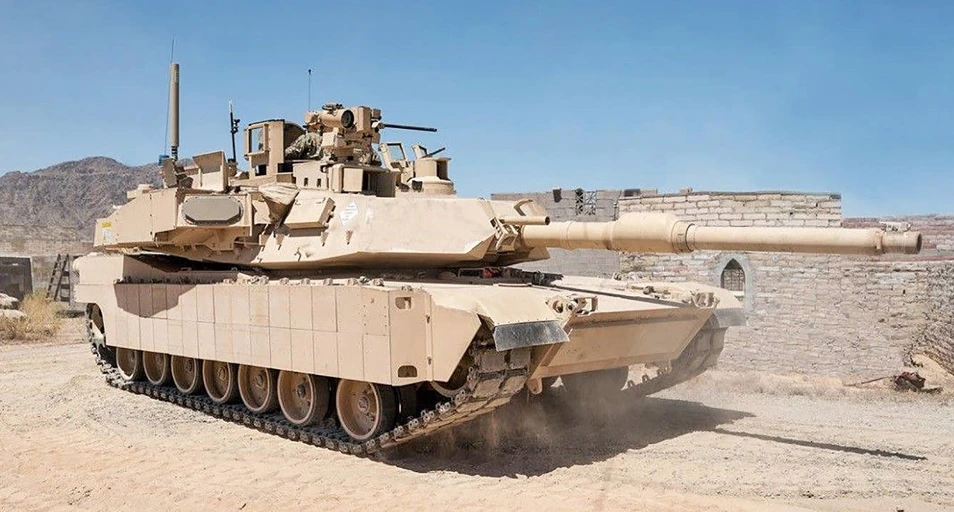
by Dukgyu | Jul 12, 2023 | war machines
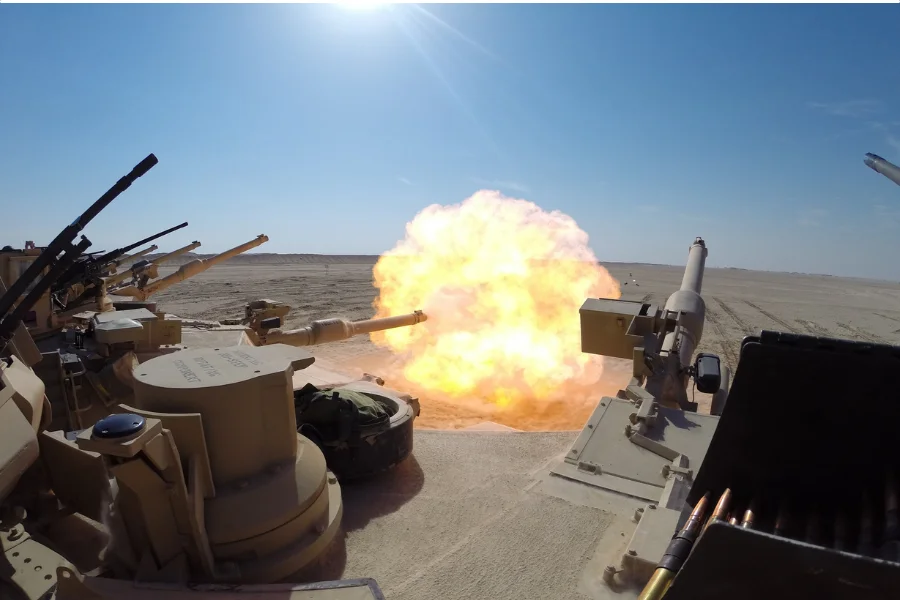
Modern tanks
Modern tanks are a crucial component of military strength and technological advancements. When deciding which modern tank is the best today, various factors such as firepower, protection, and mobility should be considered.
The Abrams M1A2 SepV3 has advanced features like improved communication systems and active protection capabilities.
Tanks such as the German KF51 Panther and the Russian T-14 Armata also rank among the top contenders in today’s military landscape.
Each of these machines showcases impressive engineering and battlefield readiness. These tanks represent the pinnacle of modern military technology, making it worthwhile to explore the features that set them apart.
If you are interested in military technology, this article will explain why these tanks lead the field. The article will clearly understand which modern tanks dominate today’s battlefields by examining their strengths.
Evolution and Role of Modern Tanks
Modern tanks have transformed significantly over the years, serving crucial roles on the battlefield. They reflect advancements in technology and military strategy, impacting how conflicts are managed and won.
Historical Development
The evolution of modern tanks began with the Mark I tank, which debuted during World War I. Early tanks emphasized armored protection and mechanized movement across rough terrains.
As technology advanced, WWII saw tanks becoming faster and more powerful.
Today’s modern-day tanks have enhanced firepower and sophisticated targeting systems. They incorporate lightweight materials, increasing mobility without sacrificing defense.
Prominent tanks such as the M1 Abrams from the United States and the Leopard 2 from Germany showcase these innovations.
Tanks have evolved from slow-moving war machines to rapid-response units capable of striking with precision.
Contemporary Use
Today, modern battle tanks play a pivotal role in military operations. They are crucial for ground assaults, providing robust firepower and protection for troops.
For example, modern US tanks, like the M1 Abrams, are known for their combat effectiveness and versatility in diverse environments.
Modern tanks are not just about power; they integrate advanced technologies such as GPS navigation and automated control systems. Nations like Russia and China continuously develop sophisticated models to maintain strategic advantages.
As warfare evolves, the role of modern tanks adapts, proving their integral presence in both offensive and defensive strategies on the battlefield.
Design and Technology

Modern tanks focus on operational efficiency, such as protection and firepower
Modern tanks are a marvel of engineering. They combine advanced materials and cutting-edge technology to dominate the battlefield.
These machines focus on superior protection, adequate firepower, agility, and crew comfort to ensure peak operational efficiency.
Armor Systems
Modern military tanks utilize composite armor that enhances protection while minimizing weight. This armor often consists of layered materials like ceramics, steel, and Kevlar, designed to absorb and deflect projectiles.
Reactive armor adds a layer of safety by exploding outward to neutralize incoming threats. Advances in modern us tanks demonstrate exceptional armor systems, such as the M1 Abrams, which uses depleted uranium for enhanced defense levels.
Weaponry
Cutting-edge weaponry in modern tanks underscores their strategic value. These tanks typically feature a main gun, often a smoothbore cannon, capable of firing armor-piercing rounds and guided missiles.
These firepower capabilities are complemented by machine guns for infantry defense. The Leopard 2A7, a prime example of modern German tanks, showcases a highly effective Rheinmetall 120mm gun optimized for various operations.
Mobility and Power
Modern-day tanks require potent engines to ensure quick maneuverability and strategic advantage. Turbine and diesel engines are standard, offering a blend of speed and reliability.
With advanced suspension systems, these tanks maintain stability over rough terrain. Russian modern tanks like the T-14 Armata are known for their mobility and speed, showcasing improvements in engines and transmission systems for optimal performance.
Crew Comfort and Support Systems
Modern tanks integrate ergonomic designs and technology for improved crew comfort. Climate control, padded seats, and advanced communication systems enhance the operational environment.
Systems like night vision, GPS, and automated tracking allow crews to remain effective during missions. The advancements in Japanese modern tanks, such as the Type 10, highlight innovations in crew-centric systems, ensuring efficiency and comfort during extended operations.
Notable Modern Tanks

US M1A2 SEP v3 Abrams tank
Modern tanks have become a crucial element in military strategy across various nations. Each country boasts unique designs with advanced technology, enhancing their capabilities on the battlefield.
Main Battle Tanks by Country
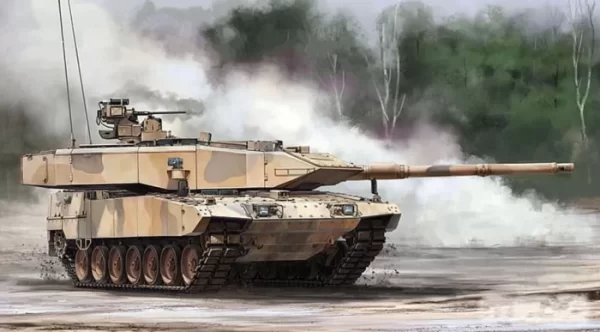
German Leopard 2A7 tank
German modern tanks are led by the Leopard 2, renowned for its powerful 120mm smoothbore cannon and excellent mobility. The United States fields the M1A2 Abrams, famous for its durable armor and advanced electronics.
Russian modern tanks, like the T-14 Armata, feature innovative technology such as an unmanned turret and active protection systems.
French modern tanks include the Leclerc, which is valued for its speed and digital fire control systems. Japan’s Type 10 offers versatile performance tailored for its varied terrain.
The Leopard vs. Abrams
The Leopard 2 and the M1 Abrams are often compared due to their prominence in western armies.
The Leopard 2 emphasizes mobility and range with efficient fuel consumption. Its advanced thermal sights allow precision targeting.
The M1 Abrams focuses on strong defense, equipped with composite armor and powerful turbine engines. It excels in firepower and protection but is heavier and consumes more fuel.
Both tanks use sophisticated targeting systems, making them formidable players in modern warfare.
Table 1. Comparison between Leopard 2 and Abrams tanks
| Features |
Leopard 2 (Germany) |
Abrams (USA) |
| Nickname |
Swift Predator |
Ironclad Juggernaut |
| Manufacturer |
Germany |
United States |
| Main Gun |
120mm smoothbore gun |
120mm smoothbore gun |
| Special Focus |
Speed, Agility, and High-Tech Firepower |
Superior Armor and Survivability |
| Mobility |
Superior – thanks to a powerful multi-fuel engine and advanced suspension system |
High – but not specifically highlighted in comparison to Leopard 2 |
| Advanced Tech |
Digital fire control systems, advanced optics, and sophisticated thermal imaging system |
Advanced fire control system, sensors, and targeting system |
| Armor |
Not specified |
Advanced composite armor (Chobham armor) |
| Survivability |
Not specifically highlighted |
High – designed to withstand high-explosive anti-tank (HEAT) rounds and kinetic energy penetrators |
| Ability to Engage Targets |
High accuracy in various combat conditions |
Accurate in both day and night conditions, can track and engage moving targets while on the move |
| Terrain Versatility |
Can traverse challenging terrain at high speeds |
Not specified |
Innovative Designs
Modern tank designs push boundaries with technology like artificial intelligence and stealth capability.
For instance, the Merkava Mk 4 Barak incorporates advanced AI systems that streamline operational tasks.
The PL-01 from Poland showcases a futuristic design with modular armor and an infrared suppression system. Such innovations aim to enhance survivability and adaptability in diverse combat environments.
The Most Dangerous Tanks in the World

Russian T-14 Armata tank
Formidable tanks with a reputation for dominance include the T-14 Armata, which is known for its cutting-edge tech and protection systems.
The M1A2 Abrams holds a prominent place due to its impressive combat record.
The Leopard 2’s versatility and robust defensive features make it a fearsome opponent. Tanks like these define military might and technological progression in modern warfare.
Advancements in Tank Technology
Modern tanks continue to evolve with new technologies that enhance their capabilities on the battlefield. Two significant areas of advancement include active protection systems and the integration of unmanned ground vehicles.
Active Protection Systems

How to deal with an incoming threat by the Trophy APS system
Active protection systems (APS) safeguard modern tanks against incoming threats. These systems detect, track, and neutralize projectiles such as anti-tank missiles and rockets before they can cause harm.
For example, the Israeli Trophy system uses radar and sensors to identify threats and counterattacks by launching small projectiles to intercept them.
US modern tanks like the M1 Abrams are adopting such technologies, significantly increasing their survivability. Russian modern tanks, notably the T-14 Armata, also feature advanced APS capabilities.
This technology is a game-changer, providing extra defense layers and adapting to various war environments.
Unmanned Ground Vehicles Integration
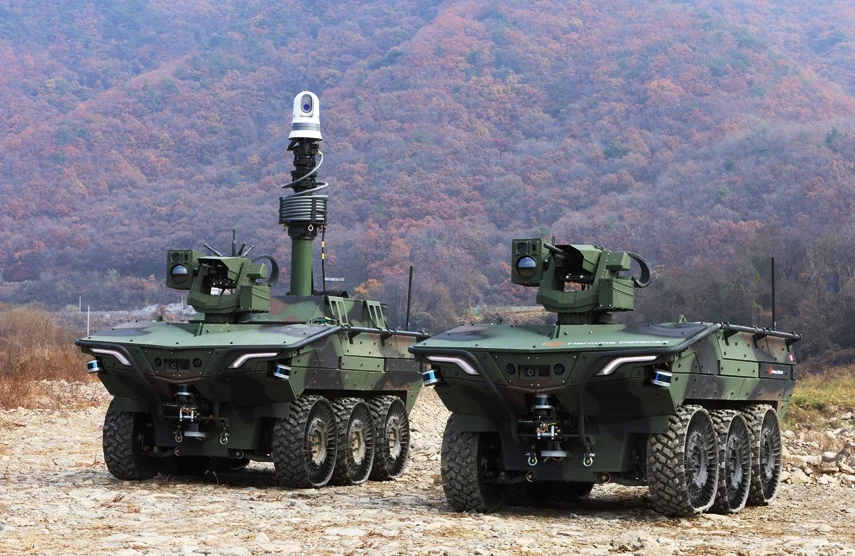
Arion-SMET UGV for supporting infantry operations such as transporting munition and weapons by US Army
Integrating unmanned ground vehicles (UGVs) with modern main battle tanks transforms operational scenarios. UGVs can perform various tasks, including reconnaissance, logistics support, and active conflict engagement.
By working alongside modern military tanks, UGVs help reduce the risk to human soldiers, allowing remote operations in dangerous zones.
Modern US tanks, for instance, are increasingly tested for compatibility with UGVs, expanding their tactical options on the battlefield. The military potential of UGVs is vast, ranging from resupply missions to combat support, and represents a future step in automating and enhancing tank warfare capabilities.
Comparative Analysis
Modern tanks vary significantly in design and capability, depending on country-specific needs and technological advancements. Key issues include tank-to-tank interactions and how defense budgets shape these innovations.
Tank Versus Tank Comparisons
A few models often come to mind when comparing tanks: the M1A2 Abrams, Leopard 2, and the T-14 Armata.
The M1A2 Abrams is a modern US tank known for its armor and advanced fire control systems. German modern tanks like the Leopard 2 are recognized for their precision engineering and versatility on the battlefield.
Russian modern tanks like the T-14 Armata feature advanced technology like unmanned turrets and heavy armor.
Modern Japanese tanks, like the Type 10, offer agility and cutting-edge electronics, making them suitable for maneuver warfare. Each tank model has its strengths: firepower, armor, or mobility. The choice often depends on the operational needs and strategy of the military using them.
Global Defense Spending
Global defense spending plays a significant role in the design and deployment of these tanks.
Countries with large budgets, such as the United States, Germany, and Russia, can afford experimental technologies for their modern military tanks.
For instance, the development of the T-14 Armata reflects Russia’s investment in military innovation.
Germany’s Leopard 2 is another example of a tank benefiting from a robust defense budget.
In contrast, countries with lower budgets may focus on upgrading existing models rather than developing new ones. While some nations field the most modern tanks, others rely on older but improved versions.
Final Thoughts
Modern tanks play a crucial role in military strategy today. Known for their advanced technology and robust design, these machines combine firepower, armor, and mobility to become powerful assets on the battlefield.
Several tanks are noted for their excellence. For example, the Leopard 2 is highly regarded in Europe for its ability to combat high-tech opponents and balance speed and protection.
The M1A2C Abrams from the U.S. boasts better armor, improved mobility, and superior fire control systems. Its main gun can penetrate most armor types, making it a formidable adversary.
Different regions have their favorites. The Merkava V is preferred in Israel for its adaptability to local challenges. Meanwhile, Russian field models like the T-14 Armata and T-90M emphasize cutting-edge features and versatility.
Key Takeaways: Modern tanks, like the K2 Black Panther from Korea, integrate technology and performance to address diverse military needs. Rapid advancements suggest continued evolution in tank design and capability.
Frequently Asked Questions
Modern tanks vary widely in design and capabilities. This section explores various aspects of current military tanks, including comparisons and advancements.
What is the most modern tank?
The most modern tanks include the T-14 Armata and the M1A2 SEP V3 Abrams. These tanks feature advanced technology, such as upgraded armor and improved targeting systems. They represent the forefront of tank innovation today.
What is the best modern tank today?
Opinions on the best modern tank vary, but the M1A2C Abrams is often highlighted for its mobility and armor. Another contender is the Challenger 2, which is known for its combat experience. These tanks are widely recognized in military circles for their effectiveness.
Is T-90 better than Abrams?
The T-90 is less expensive and lighter, offering specific advantages in different terrains. However, the Abrams are noted for their superior armor and firepower. Each tank has unique strengths, making them suitable for other roles.
Are there any 4th gen tanks?
Fourth-generation tanks include the T-14 Armata. This tank features cutting-edge technologies like unmanned turrets, and it is a step up from previous generations with advanced automation and protection.
What is the top 1 tank in the world?
Currently, the M1A2 Abrams is often regarded as the top tank globally. Its robust design and combat performance set high standards and remain a prominent choice for many armed forces.
Has the US ever lost an Abrams tank?
The US has lost Abrams tanks in combat, though such losses are relatively rare. Situations in conflict zones have led to damage or destruction. These losses often result from anti-tank missiles or IEDs.
Why is the Abrams tank so good?
The Abrams tank is praised for its strong armor and firepower. Its advanced electronics and mobility make it versatile in various terrains. The tank’s reliability and continuous upgrades contribute to its excellence.
How many Abrams has Ukraine lost?
Ukraine has not operated Abrams tanks extensively, so verifiable loss data is limited. However, current military engagements and aid might alter their usage and potential losses in the future.
What country has the best tank?
Countries like the United States and Russia maintain some of the best tanks, such as the M1A2 Abrams and T-14 Armata. These tanks showcase superior military technology. The diverse strengths of these models make them highly regarded internationally.
Is America making a new tank?
Yes, America is working on developing new tank models. These projects aim to integrate future-ready technologies.
Continued research and development ensure that American tanks remain competitive globally.
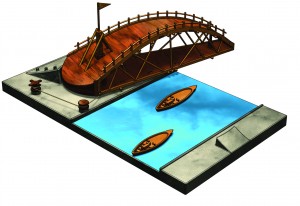
by Dukgyu | Aug 21, 2022 | civil-engineering-inventions

Leonardo da Vinci swing bridge model
Leonardo da Vinci swing bridge showcases his brilliance in blending art and engineering.
This unique invention was designed to pivot, allowing bridges to be retracted to prevent enemy crossings while also enabling friendly passage.
By exploring da Vinci’s ingenuity, you can appreciate how his designs for a movable bridge addressed both functional and strategic needs at the time.
The da Vinci swing bridge represents a fascinating example of innovation for those intrigued by historical engineering marvels.
This bridge used a series of winches and wheels, showcasing the advanced thinking that da Vinci applied to solving practical problems. Da Vinci’s Revolving Bridge further illustrates his contributions to military strategies by enabling quick and effective transport over water obstacles.
Through this exploration, one gains insight into da Vinci’s versatility. His ability to design for civilian and military purposes highlights his invaluable contributions to civil engineering.
The swing bridge is just one example of how his mechanical ideas inspire innovation today.
Overview of the Leonardo da Vinci Swing Bridge
Leonardo da Vinci designed the swing bridge to combine practicality and innovation.
It served civilian and military purposes, providing quick and strategic access across waterways while keeping enemies at bay. Key aspects include its functional use and historical significance in engineering.
The Concept Behind the Swing Bridge
The Leonardo da Vinci swing bridge was crafted with versatility in mind.
Intended for tactical advantages, it allowed travelers and soldiers to cross rivers swiftly.
What made it distinct was its ability to swing open and retract to prevent enemy access. This design showcased da Vinci’s brilliance in engineering, blending simplicity with strategic depth.
The structure used wooden beams interlocked to provide strength and flexibility. This engineering feat reflected da Vinci’s understanding of physics and mechanics, allowing the bridge to support significant weight yet remain operationally efficient.
Such concepts demonstrated how innovative approaches in design could solve practical problems of the time.
Historical Context of Leonardo da Vinci’s Designs
During Leonardo’s era, the need for movable bridges was essential, particularly in times of conflict.
The Leonardo da Vinci bridge was developed under the patronage of powerful leaders like Cesare Borgia, who sought effective solutions for military campaigns.
Da Vinci’s designs were not just architectural marvels but also tools of war.
His bridges, including the swing and revolving bridge, pioneered their time and laid the groundwork for modern movable bridges.
Through these designs, da Vinci provided insights into how to build a Leonardo da Vinci bridge using practical yet advanced techniques that have inspired engineers for generations.
How the Leonardo da Vinci Swing Bridge Works
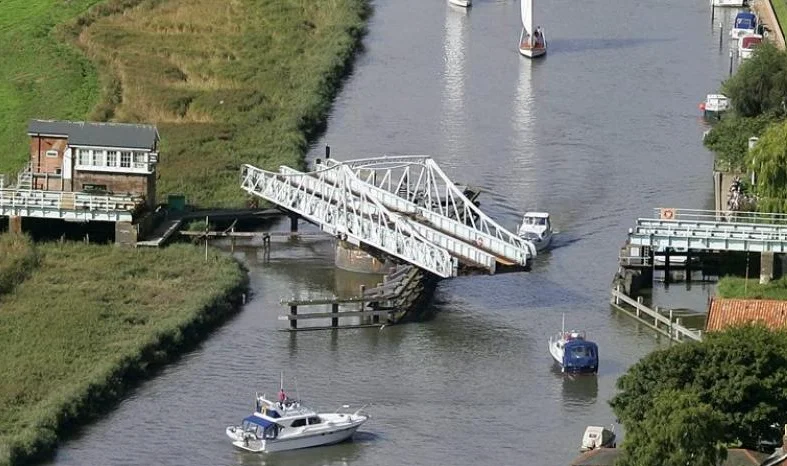
Modern use of a swing bridge
The Leonardo da Vinci swing bridge represents an ingenious feat of engineering. Its design allows for practical use and strategic defense, providing insights into da Vinci’s brilliance.
Mechanics of the Swing Bridge Design
The swing bridge is a masterpiece of engineering. Its central pivot allows it to turn 360 degrees.
This pivot is fixed on one bank, enabling the bridge to rotate quickly. Ropes and pulleys complement this mechanism, assisting in moving the bridge smoothly.
Despite its size, a single person could maneuver the swinging bridge, illustrating da Vinci’s clever use of force distribution.
Crafted to be functional and defensive, the bridge was initially designed for military purposes.
It could span rivers or trenches and then be swung aside to prevent enemy crossings. This design’s simplicity and adaptability highlight da Vinci’s innovative approach to construction in the 15th century.
Advantages of the Swing Mechanism
The swing mechanism provided several advantages.
First, it offered rapid deployment and retraction, making it ideal for military operations. Soldiers could cross and secure strategic points quickly without needing a permanent bridge.
Additionally, the revolving nature of the da Vinci bridge allowed it to be moved to prevent enemy access.
This strategic advantage meant that it functioned not only as a passage but also as a deterrent.
The design also reflects da Vinci’s broader philosophy of harmonizing design with natural forces.
The way forces interlocked and provided stability showcases his understanding of engineering principles.
This combination of practicality and innovation makes the Leonardo da Vinci swing bridge a standout in engineering history.
Applications of the Leonardo da Vinci Swing Bridge
The Leonardo da Vinci Swing Bridge, a marvel of engineering, was not just a concept but a practical solution for various scenarios.
It combined innovation and functionality, allowing for military and civilian applications throughout history.
Historical Uses in Warfare
Leonardo da Vinci designed the swing bridge with military purposes in mind.
Mobility was crucial for armies during his time, especially when crossing rivers or canals. The revolving bridge enabled troops to move swiftly across bodies of water, facilitating strategic troop deployments and retreats.
The da Vinci Bridge could rotate 90 degrees, using a system of winches and wheels, to allow or block boats’ passage.
This function made it a defensive asset, providing a tactical advantage by controlling access to certain areas.
Modern Interpretations and Uses
Today, the Leonardo da Vinci Swing Bridge concept has inspired modern engineering projects.
Its design principles are used in educational settings to demonstrate the ingenious application of levers and balance. The self-supporting bridge exemplifies how ancient techniques can influence modern architecture and mechanical design.
Contemporary designers have adapted these principles to create structures requiring quick assembly or temporary setups.
This bridge’s ability to facilitate smooth water traffic control has been mirrored in several current canal and river management projects.
The da Vinci Swing Bridge remains a testament to Leonardo da Vinci’s forward-thinking approach and its lasting relevance in modern engineering.
Closing Remarks
Leonardo da Vinci’s swing bridge is a testament to his innovative spirit and mastery of engineering.
Designed for functionality, the bridge could swing open to allow ships to pass, showcasing its practicality during his time.
His design demonstrates a blend of creativity and functionality. The swing bridge concept involved rotating the bridge to make way for boats, highlighting da Vinci’s forward-thinking approach.
The simplicity and efficiency in da Vinci’s design continue to capture interest.
This bridge wasn’t just about mechanics but an example of harmonious design and utility working together.
Leonardo’s contributions go beyond art; his work, like the swing bridge, underscores his broad impact in engineering and design.
Key Takeaways: Leonardo da Vinci’s swing bridge illustrates an incredible fusion of creativity and practicality, inspiring future innovators.
Frequently Asked Questions
Leonardo da Vinci designed several innovative bridges, including the swing bridge. This section addresses common questions about his groundbreaking designs.
Who invented the swing bridge?
Leonardo da Vinci invented the swing bridge, which was part of his innovative approach to bridge design. It allowed passage over rivers while also acting as a defensive mechanism.
What is special about the da Vinci Bridge?
The da Vinci bridge is renowned for its ingenious design and structural capabilities, such as its self-supporting features without fasteners.
How did da Vinci’s revolving bridge work?
Da Vinci’s revolving bridge was designed for military use. It allowed soldiers to cross rivers quickly and could be easily moved to deter enemies.
Where can you find a real-life da Vinci bridge?
Real-life replicas of the da Vinci Bridge can be found in various locations. A notable one spans a canal near Oslo, Norway.
Who invented the Da Vinci bridge?
Leonardo da Vinci conceptualized the Da Vinci Bridge, and his designs have inspired the construction of numerous modern versions.
What is the purpose of the swing bridge?
The purpose of the swing bridge was to enable friendly passage over water and to retract back as a defensive barrier against opponents.
Why is it called the Swinging Bridge?
The Swinging Bridge is called because it can pivot or swing around a central point. This allows it to open for water traffic and close for foot traffic.
Where is the longest swinging bridge in the world?
The longest swinging bridge in the world is the Gatlinburg SkyBridge in Tennessee, USA. While not a da Vinci design, it holds the record for length.
What are the advantages of a swing bridge?
A swing bridge can easily open and close to allow ships to pass.
It combines both functionality and innovation, embodying da Vinci’s forward-thinking designs.
When was the last time the Swing Bridge opened?
Information about the last operation of a specific da Vinci swing bridge is not well-documented.
However, many modern swing bridges inspired by da Vinci’s ideas are still functional.

by Dukgyu | Aug 21, 2022 | civil-engineering-inventions

Da Vinci Printing Press Model
Da Vinci Printing Press combines Leonardo da Vinci’s genius with the revolutionary printing press.
You’ll find your answers here if you’re curious about the surprising connection between this Renaissance icon and the printing revolution. Dive into this exploration to uncover how Leonardo’s inventive mind contributed to advancing the efficiency of printing technology.
Leonardo da Vinci, known for his vast array of inventions, did not invent the printing press. However, he studied and modified the Gutenberg printing press to enhance efficiency.
Leonardo’s adjustments to the printing press highlight his ability to innovate existing technology, showing his significant impact beyond art and science.
Examining da Vinci’s work on the printing press reveals the depth of his interest in practical inventions. Understanding how his ideas improved the press enables a greater appreciation of his diverse talents.
Leonardo da Vinci’s Influence on Printing
Leonardo da Vinci was surrounded by a world bursting with new ideas, especially in printing, which helped spread knowledge.
Although he did not invent the printing press, his era influenced typesetting and bookmaking methods. His work also significantly shaped how books were created and consumed during the Renaissance.
Early Printing Technology
When Leonardo da Vinci was alive, the Gutenberg printing press revolutionized the way books were made.
This invention allowed books to be printed quickly and in large numbers, spreading education and ideas faster than before. Leonardo, a man of epochal change, benefited from this, even though he was not directly involved in developing the Da Vinci printing press.
Advancements in Typography
Leonardo had a keen eye for design and detail. Even though he did not create new types of fonts, he influenced advancements in typography. His sketches show a fascination with how letters were formed and arranged.
This interest in lettering contributed to developing more aesthetically pleasing and readable typefaces, which became more common as printing methods advanced through the Renaissance.
Renaissance Impact on Printing
The Renaissance period saw an explosion of learning, which the printing press made possible. Leonardo’s vast body of work and numerous paintings inspired printed materials rich in detail and artistic value.
Printing became a tool for spreading Leonardo’s and other artists’ work, allowing more people to engage with their ideas—this broader access to information led to changes in how knowledge was shared and consumed during the time.
Design and Mechanism
The Da Vinci Printing Press showcases unique design features that distinguish it from earlier models like the Gutenberg Press. This section highlights Leonardo’s creative adaptations and how they are compared to existing technology.
Innovations in Press Design
Leonardo da Vinci imagined a press system incorporating mechanical precision and ease of use. His design involved a screw mechanism that used levers and gears to apply pressure, allowing for more consistent printing results.
This method improved the efficiency of printing operations, making it possible to print more pages in a shorter time. Leonardo’s focus on mechanical efficiency set his designs apart, showcasing his ability to enhance existing technologies like the Gutenberg Printing Press.
Da Vinci’s Press Modifications
Da Vinci’s printing press introduced modifications aimed at increasing print quality. By adjusting the alignment and pressure of the type bed and platen, his design ensured an even ink distribution, which was vital for producing clearer and more consistent images and text.
Leonardo also experimented with different materials, suggesting stronger woods and metals to enhance durability. These refinements showcased his understanding of art and engineering, bridging the gap between the two disciplines through creative innovation.
Comparison to Gutenberg’s Press
When comparing the Gutenberg Press to the Da Vinci Printing Press, one can see apparent differences in design approach. Gutenberg’s press was a groundbreaking invention in its own right, using a screw press concept adapted from wine and olive presses.
However, Leonardo’s design was more advanced mechanically. His use of multiple gear systems and precise engineering streamlined the printing process and improved output quality.
While Gutenberg laid the groundwork, Da Vinci’s enhancements paved the way for more efficient and reliable printing methods.
Cultural and Educational Significance
The Da Vinci Printing Press profoundly impacted the spreading of knowledge, shaping literature and leaving a lasting legacy in scholarly publishing. Its influence extended far beyond just technological advances.
Spread of Knowledge
The Da Vinci Printing Press played a pivotal role in increasing the accessibility of information. With the mass production of books, knowledge became available to a broader audience. This democratization of learning broke the barriers set by the elite who previously controlled information.
Books and manuscripts could be shared across Europe, fostering an environment ripe for intellectual growth. Comparably, the Gutenberg Printing Press also contributed significantly to the spread of learning by enabling the mass distribution of texts, thereby empowering education and learning.
Influence on Literature
The invention of the Da Vinci Printing Press allowed authors to reach new audiences. It enabled the creation and dissemination of different literary forms, influencing how stories and ideas were shared. As a result, literary culture flourished, producing diverse works.
Authors could now gain recognition beyond their local areas. This recognition expanded the literary world, allowing more voices and stories to be heard and preserved, consequently shaping the literary landscape of the era.
Its platform for writers is akin to how modern-day publishing enables widespread access to literary works.
Legacy in Scholarly Printing
The Da Vinci Printing Press laid the groundwork for the future of scholarly publishing. It established a precedent for accurate and reliable text reproduction crucial for scientific and academic communities.
This advancement ensured that ideas could be preserved and built upon over time. Scholarly texts and research reached a broader audience, which is crucial for developing various academic fields.
Today, the printing traditions that began with innovations like Leonardo da Vinci’s influence on printing technology continue to play a key role in disseminating academic knowledge.
Frequently Asked Questions
The printing press’s legacy is rich with questions about its inventors and legacy. Although not an inventor of the printing press, Leonardo da Vinci contributed significantly to inventions and innovation.
Did Leonardo da Vinci use the printing press?
Leonardo da Vinci did not actively use the printing press for his works. Instead, he focused on creating designs and drawings in his notebooks, which documented his ideas and inventions.
Who actually invented the printing press?
Johannes Gutenberg is credited with inventing the printing press around 1440. His invention revolutionized the reproduction of books and other printed materials, making them more accessible to the public.
What inventions did Da Vinci invent?
Leonardo da Vinci was a prolific inventor. His notable designs include the flying machine, an early version of the helicopter, and the armored vehicle. These inventions highlight his forward-thinking approach and his impact on future technological advancements.
Did any of Da Vinci’s machines work?
Many of Da Vinci’s machines were conceptual designs and were never built during his lifetime. However, some of his inventions, such as his mechanical devices, have been constructed in modern times and shown to work effectively.
Was the printing press used for art?
Yes, the printing press played a significant role in art distribution. Artists and publishers used it to reproduce and disseminate illustrations, contributing to spreading artistic styles and techniques across Europe.
Who made the first printing press in the Renaissance?
Johannes Gutenberg invented the first printing press in the Renaissance. His press introduced movable type to Europe, laying the foundation for the mass production of books and written materials.
Why is the printing press so important?
The printing press is crucial because it democratized knowledge. Making books more affordable and widely available paved the way for spreading literacy and sharing ideas, fueling movements like the Renaissance and the Enlightenment.
Who invented the printing press in the 14th century?
The invention of the printing press is attributed to Johannes Gutenberg in the mid-15th century, not the 14th century. His work in Mainz, Germany, started a new era in information dissemination.
What are some fun facts about the printing press?
Fun facts about the printing press include that it drastically reduced the cost of books, enabling the spread of literacy. Gutenberg’s Bible, one of the first significant books printed, symbolizes this transformative historical period.











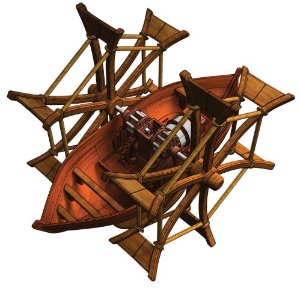
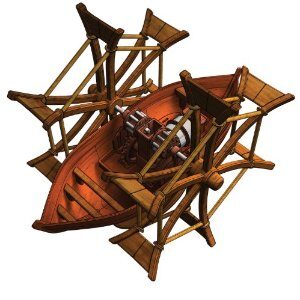
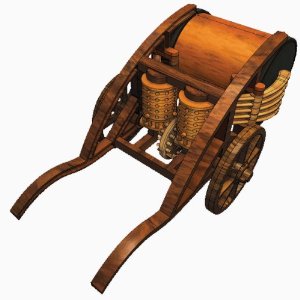
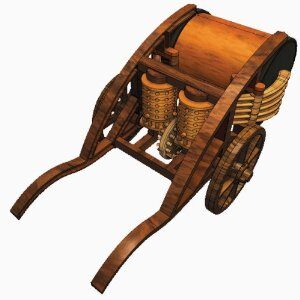
 Leonardo Bianchi,
the creator of Leonardo da Vinci's Inventions.
Thank you for visiting
Leonardo Bianchi,
the creator of Leonardo da Vinci's Inventions.
Thank you for visiting